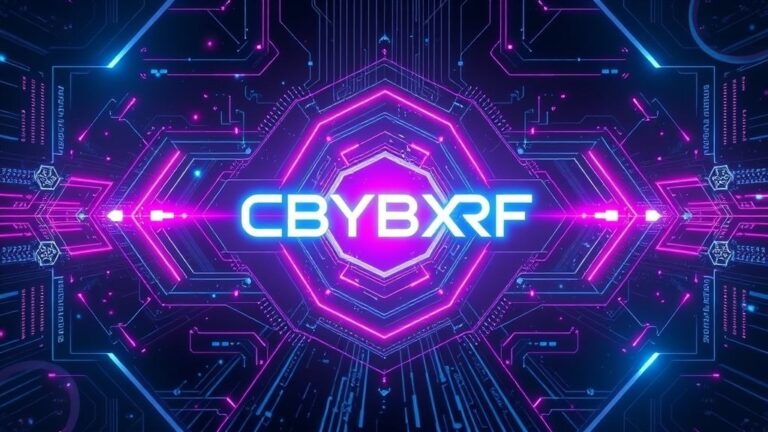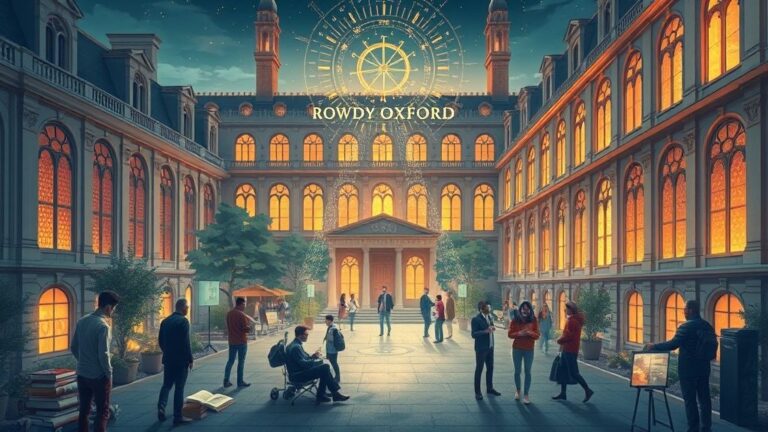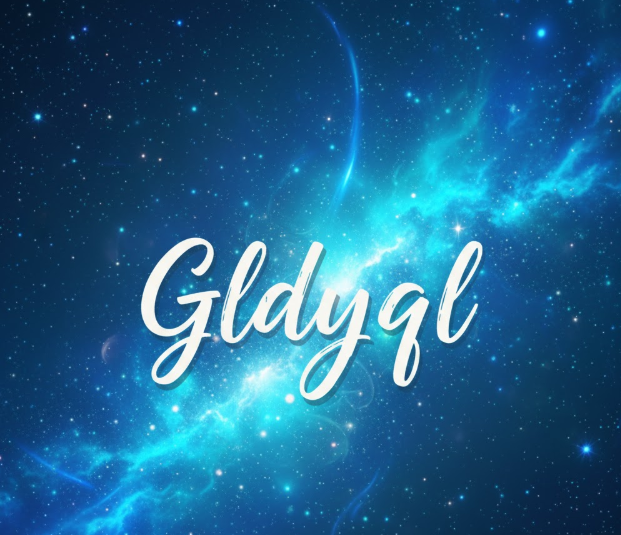BinusCX Bridging Technology, Education, and Cultural Heritage through Digital Innovation
Introduction
In an era defined by digital transformation, the world is witnessing a rapid fusion of technology, education, and cultural preservation. Among the innovative platforms reshaping this landscape is BinusCX, a forward-thinking solution that originated from the technological ecosystem of Southeast Asia. Designed initially as an advanced educational and client experience platform, Binus CX has evolved into a symbol of how digital learning can transcend borders and disciplines.
Interestingly, platforms like Binus CX are no longer confined to classrooms or corporate boardrooms. Their applications are expanding into unexpected areas — such as the preservation, documentation, and virtual exploration of historic sites in Leeds, a city rich in heritage and innovation. Together, technology and culture form a powerful duo that brings the past to life while equipping future generations with the tools to learn, connect, and engage in unprecedented ways.
This comprehensive article explores how Binus CX is redefining digital experiences, how it can enhance cultural education, and how it connects with global efforts to preserve and promote places like the historic sites in Leeds through immersive learning.
Understanding BinusCX
A Revolution in Digital Experience
Binus CX (Customer Experience platform by BINUS University) represents a fusion of educational innovation and experience management. Originating from Indonesia, it was developed to provide a unified ecosystem that blends learning management, client interaction, and performance analytics.
The “CX” in its name stands for “Customer Experience,” but its broader application extends to “Learner Experience.” Binus CX combines the best practices of academic technology and corporate CX systems, allowing users to create engaging, personalized journeys whether in education, training, or tourism sectors.
The Vision Behind Binus CX
The mission of BinusCX is simple yet powerful:
To empower individuals and institutions by creating seamless, data-driven, and human-centered digital experiences.
This vision aligns with the growing need for smarter learning systems that can adapt to diverse needs, cultural backgrounds, and learning styles — a principle equally valuable when applied to educational tourism and heritage studies.
The Need for Smart Learning and Cultural Awareness
Why Digital Learning Matters
The 21st century demands flexible, accessible education. Traditional systems often struggle to keep pace with technological shifts and global demands. Platforms like BinusCX are designed to overcome these limitations by offering a blend of online learning, real-time analytics, and interactive communication.
This approach ensures that knowledge is not just transferred but experienced — a concept that parallels the goals of heritage preservation. Just as education evolves to meet modern demands, the study of history and culture must adapt to digital-first audiences.
Cultural Learning in the Digital Era
Understanding culture, history, and heritage is an essential part of human development. Through immersive technology and digital storytelling, the exploration of historic sites in Leeds — such as Kirkstall Abbey, Leeds Town Hall, and the Thackray Museum of Medicine — becomes more interactive and inclusive.
By integrating systems like BinusCX, educators and cultural institutions can provide dynamic experiences that connect learners with history beyond physical limitations.
Key Features of Binus CX
| Feature | Description | Potential Application |
| AI-Powered Personalization | Adapts learning content to user behavior and preferences | Custom heritage learning modules for museum visitors |
| Omnichannel Access | Works across mobile, desktop, and tablet interfaces | Accessible cultural education globally |
| Real-Time Analytics | Monitors engagement and learning progress | Tracks visitor interest and feedback at cultural sites |
| Interactive Learning Tools | Includes videos, simulations, and gamified modules | Virtual tours of historic sites in Leeds |
| Collaboration Spaces | Enables group discussions and project sharing | Student-led digital exhibitions or community projects |
These features demonstrate how BinusCX isn’t limited to classrooms—it’s a flexible infrastructure that can power multiple forms of experiential learning.
The Connection Between Binus CX and Historic Sites in Leeds
Bridging Technology and Heritage
While Binus CX was developed for educational purposes, its adaptive framework makes it ideal for cultural applications. Imagine walking through historic sites in Leeds virtually — exploring their architecture, stories, and artifacts through an AI-powered platform that adapts to your interests.
Through its user-centric design and analytics-driven approach, BinusCX can serve as the backbone for digital heritage experiences. It creates opportunities for universities, museums, and cultural organizations to bring history into the digital realm.
Educational Tourism Reinvented
Binus CX enables a form of “smart tourism,” where visitors learn through personalized modules before, during, and after their visit. For example:
- Before visiting Leeds, users can take a virtual course on its history.
- During the visit, they can use augmented reality (AR) through Binus CX’s mobile interface to explore landmarks interactively.
- Afterward, they can participate in digital discussions or quizzes about their experience.
This integration transforms tourism into an educational journey — where every traveler becomes a learner and every site becomes a classroom.
Historic Sites in Leeds: Where Learning Meets Legacy
Kirkstall Abbey: A Portal to Medieval England
Kirkstall Abbey stands as one of the most iconic historic sites in Leeds. Founded in 1152, this magnificent Cistercian monastery offers a glimpse into monastic life during medieval times. Using BinusCX-style modules, learners can virtually reconstruct the Abbey, explore daily routines of monks, or study the architecture through immersive simulations.
Leeds Town Hall: A Symbol of Civic Pride
Built in 1858, Leeds Town Hall represents the city’s industrial-era grandeur. Its neoclassical design and rich history can be preserved digitally through 3D modeling, interactive guides, and storytelling powered by AI — techniques that Binus CX’s adaptive framework could easily support.
Temple Newsam: Blending Art and History
Temple Newsam, a grand Tudor-Jacobean mansion, showcases centuries of art, culture, and heritage. Through digital storytelling on platforms like Binus CX, visitors can explore its evolution, art collections, and restoration efforts from anywhere in the world.
Thackray Museum of Medicine
This museum connects visitors with the evolution of healthcare, highlighting humanity’s resilience and innovation. With Binus CX’s interactive capabilities, such institutions can transform traditional exhibits into dynamic, learner-driven experiences.
Integrating BinusCX with Heritage Learning
Immersive Digital Storytelling
By combining multimedia, narration, and interactivity, Binus CX can transform static historical data into living stories. Users can embark on virtual “quests” through Leeds’ landmarks, earning badges as they learn — blending education with engagement.
Gamification and Engagement
One of Binus CX’s strongest features is its ability to gamify learning. When applied to heritage education, gamification can motivate users to explore more, answer quizzes, or complete historical missions, deepening their connection with the city’s heritage.
Community Collaboration
BinusCX’s collaborative spaces can unite historians, students, and locals to share oral histories, research, and photos. This collective storytelling preserves not just monuments, but memories — making heritage a living, participatory experience.
The Technological Core of Binus CX
AI and Data Analytics
Artificial intelligence is central to Binus CX’s design. It personalizes user experiences, tracks engagement, and refines content delivery based on learning behavior. This capability can be harnessed by heritage institutions to understand visitor interests and improve exhibit design.
Applications include:
- Tracking engagement during virtual tours
- Recommending related topics or exhibits
- Identifying patterns in visitor learning outcomes
Integration with Other Platforms
BinusCX supports integration with tools like Zoom, Microsoft Teams, and Google Workspace. For museums and universities collaborating on cultural projects, this connectivity fosters seamless teamwork and cross-border learning.
Mobile Optimization and Offline Access
In regions with unstable connectivity, Binus CX’s offline access ensures uninterrupted learning. For heritage projects in remote areas, this is crucial in making education accessible to all — whether in a digital classroom or at a centuries-old site.
The Role of Binus CX in Preserving Cultural Identity
Digital Preservation
By hosting 3D models, historical databases, and video archives, BinusCX can act as a digital vault for cultural treasures. For cities like Leeds, it offers a platform to safeguard stories, traditions, and visuals that define local identity.
Cross-Cultural Exchange
Through its networked design, Binus CX can connect learners from Southeast Asia, Europe, and beyond. A student in Jakarta could explore the historic sites in Leeds, while a learner in Leeds could take part in modules about Southeast Asian heritage. This cultural bridge fosters empathy and global understanding.
Impact of BinusCX Across Sectors
| Sector | Impact | Example |
| Education | Personalized and accessible learning | Digital courses integrating historical case studies |
| Tourism | Enhanced visitor engagement | Virtual tours of Leeds’ landmarks |
| Cultural Heritage | Preservation through digital archives | 3D modeling of historic sites |
| Corporate Training | Experiential learning for employees | Modules on heritage branding and cultural communication |
| Community Development | Empowerment through shared knowledge | Collaborative storytelling platforms |
This multi-sector influence shows that Binus CX’s potential extends far beyond academia—it’s a framework for innovation across disciplines.
Challenges and Solutions
1. Connectivity Barriers
Limited internet access can hinder digital education. BinusCX addresses this with lightweight mobile apps and offline modes, ensuring learning continuity even in low-bandwidth regions.
2. Cultural Adaptation
Diverse user backgrounds require adaptive content. Binus CX localizes interfaces and modules, supporting multiple languages and cultural contexts—essential for teaching about varied historical sites like those in Leeds.
3. Content Authenticity
Digital heritage projects must maintain accuracy. Binus CX’s analytics and feedback tools ensure continuous quality control, involving historians, educators, and community experts in content validation.
Future of BinusCX and Digital Heritage
| Upcoming Innovation | Description | Potential Use in Leeds |
| AR/VR Learning | Immersive reality-based modules | Virtual reconstruction of ruined abbeys |
| Gamified Learning | Reward-based educational journeys | Heritage scavenger hunts |
| Blockchain Certificates | Secure validation of learning outcomes | Verified digital heritage tours |
| AI Tutors | Personalized guidance based on user progress | Smart tour guides for visitors |
| Mobile-First Experiences | Optimized access on all devices | On-the-go cultural exploration |
The roadmap ahead is promising — BinusCX and similar technologies are poised to revolutionize how the world learns and experiences history.
Why Leeds Is a Model for Digital Heritage Innovation
Leeds stands out as a city that perfectly balances modernity and tradition. Its cultural institutions — from the Royal Armouries Museum to Leeds Industrial Museum — have embraced digital tools to attract younger audiences. Integrating platforms like Binus CX can amplify these efforts, making Leeds a global leader in tech-driven heritage education.
Collaborations between universities, tech startups, and cultural foundations can use Binus CX’s architecture to build digital ecosystems that celebrate local history while promoting global access.
Conclusion
The journey of BinusCX reflects the essence of modern innovation — bridging technology, education, and culture in ways that empower communities and preserve heritage. What began as an educational platform has grown into a versatile digital infrastructure with applications ranging from corporate learning to cultural preservation.
Meanwhile, the historic sites in Leeds stand as living testaments to humanity’s creativity and resilience. When paired with technologies like Binus CX, they gain a new dimension—becoming accessible, interactive, and alive in the digital age.






